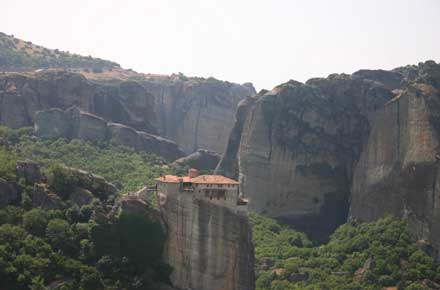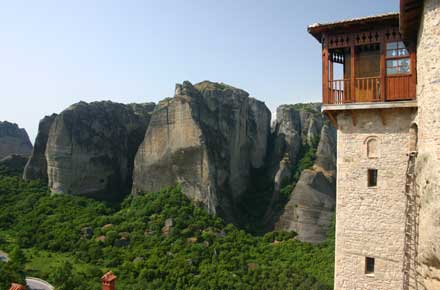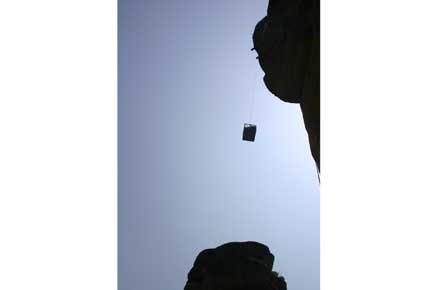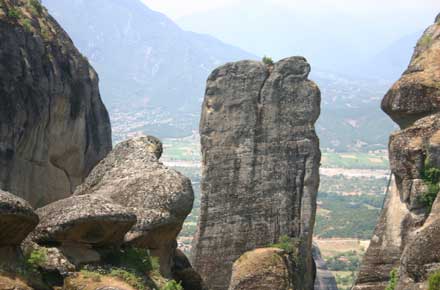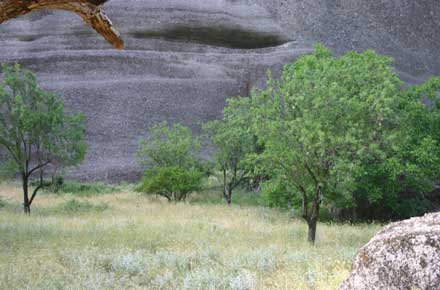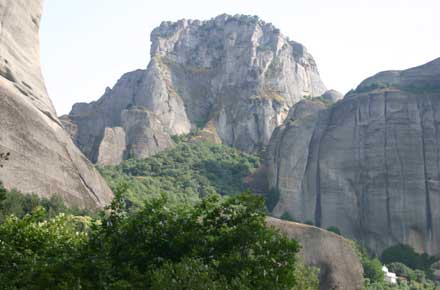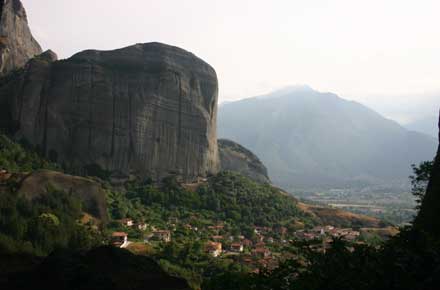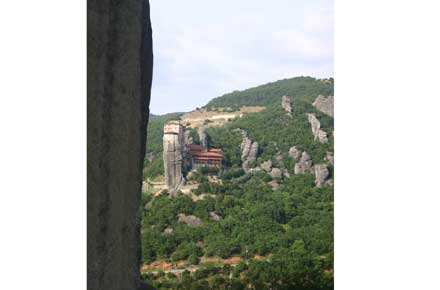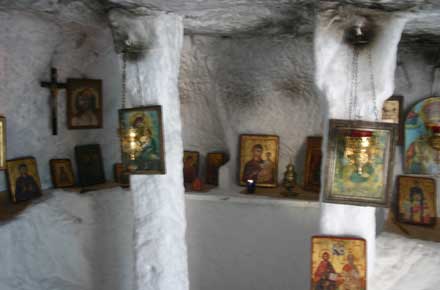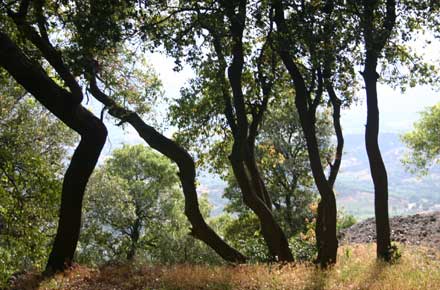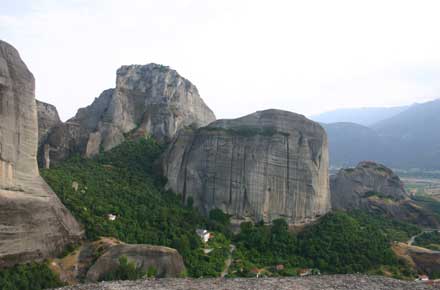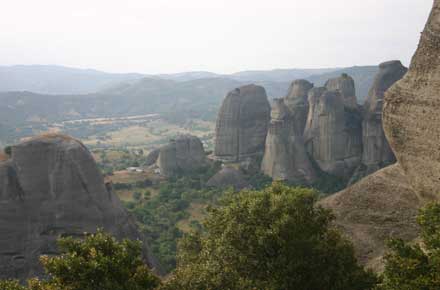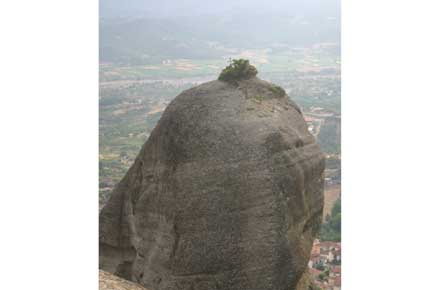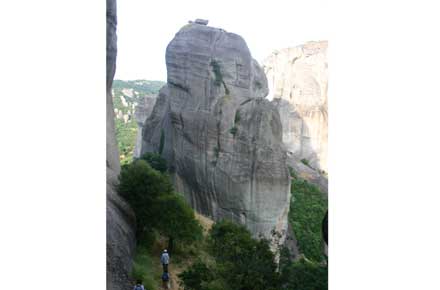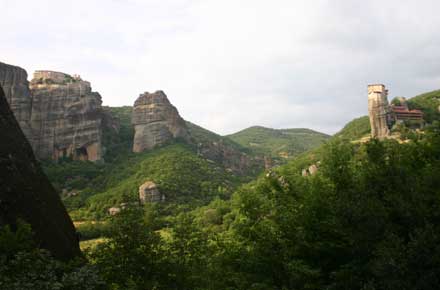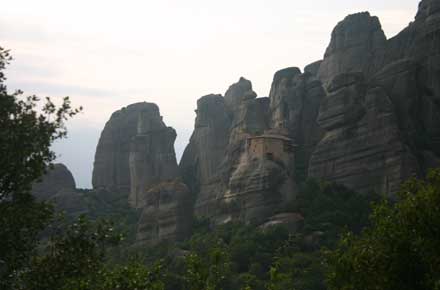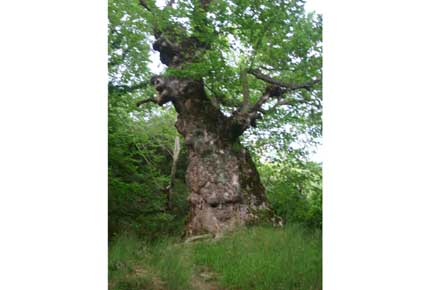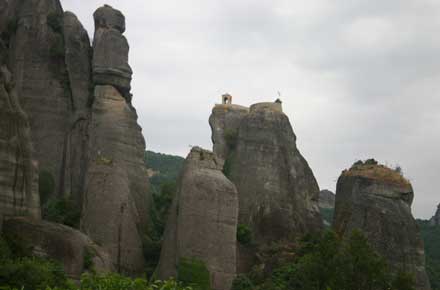Meteora
Key information: Meteora 
- Meteora is, by any measure, a captivating area, combining magnificent scenery of vast towers of heavily eroded sandstone with the mystique of a long history of Christian significance.
- Walk along ancient routes through this superb landscape, with its ancient Byzantine monasteries perched above fearsome cliffs or teetering on rocky spires.
- Beware: heavy tourism can ruin what should be an outstanding experience. Quite a lot of walks are overgrown, and none are well marked. Choose your walk, and timing, with care.
Walkopedia rating
- Walkopedia rating87.5
- Beauty31.5
- Natural interest15
- Human interest17
- Charisma34
- Negative points10
- Total rating87.5
- Note: Negs: tourism and crowds; some ugly modernity
Vital Statistics
- Length: Day walks
- Level of Difficulty: Moderate

WALK SUMMARY
Meteora is a truly remarkable place and one of the world's strangest: a forest of vast sandstone buttes and spires topped by ancient Byzantine monasteries, rising clear of the plains of northern Thessaly. This numinous place has the capacity to move you profoundly, irrespective of your beliefs or lack of them.
Meteora was once seabed. When crushed and forced upward by tectonic movement, the hard agglomerate sandstone composed of smooth stones and silt from ancient rivers cracked and subsequently eroded, leaving today's towers with their enormous, smoothly sculpted cliffs. Their greys are transformed to glowing ocres at sunset.
Hermits made their homes in caves and under overhangs in Meteora's cliffs from the eleventh century or earlier. Monastic communities evolved, in part as a result of increasing pressure from the marauding Turks, built on rocky towers, with access only by ladder or in baskets pulled up on ropes to heights of several hundred metres. Meteora means suspended in the air in Greek; seldom has a name been so fitting.
In its prime, Meteora had 24 monasteries and nunneries; only six are now active, the rest in ruins and often inaccessible.Monasteries were bombed and artwork stolen during the Second World War, and the local town of Kalambaka was razed to the ground in reprisal against partisan activity. These monuments are now, deservedly, a World Heritage Site.
Their fame means that the monasteries are now overwhelmed by tourism, with buses locked on the access roads and huge crowds in the most famous of them. It can be thoroughly depressing.
Fortunately, you can walk away from all this along ancient paths between these secluded communities. These trails are generally not well signed or maintained (or indeed mapped), and you can find yourself struggling through thick undergrowth. But they have huge atmosphere and can be thrilling. Walking on tracks and lesser roads can thus be a good option, if a bit less atmospheric. You need to choose your route carefully, to avoid the worst horrors of modern tourism; the trails in the northwest and east are perhaps the best areas for the serious walker, and the ascent of the Holy Spirit rock described here by William Mackesy is astonishing.
WILLIAM MACKESY'S ACCOUNT
of this walk
Meteora must be one of the world's strangest places, a “forest” of vast sandstone buttes and spires topped by ancient Byzantine monasteries, rising clear of the plains of northern Thessaly.
This area was once seabed; when crushed and forced upward by tectonic movement, the hard agglomerate sandstone – composed of smooth stones and silt from ancient rivers – cracked and subsequently eroded, leaving today's towers, with their enormous, smoothly sculpted cliffs, standing up to 550 metres above the nearby valley. Their greys are transformed to glowing.....
READ MOREOther accounts: share your experiences
Your comments on this walk, your experiences and suggestions, and your photos are very welcome. Where appropriate, you will be credited for your contribution.
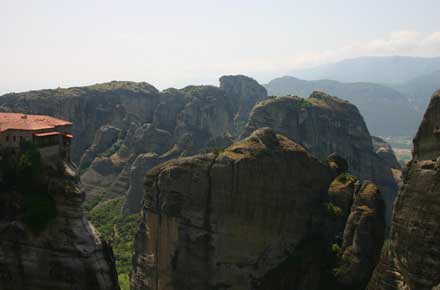
We have a lot of helpful practical information and tips about this walk, covering everything from the best books and maps, to timing and weather, geting there, possible problems, whether you need a guide and where to find them, and useful websites. This section is only open to members.
Membership is FREE AND JOINING TAKES 30 SECONDS. To login or sign up click here
Safety and problems: All walks have inherent risks and potential problems, and many of the walks featured on this website involve significant risks, dangers and problems. Problems of any sort can arise on any walk. This website does not purport to identify any (or all) actual or potential risks, dangers and problems that may relate to any particular walk.
Any person who is considering undertaking this walk should do careful research and make their own assessment of the risks, dangers and possible problems involved. They should also go to “Important information” for further important information.
Anyone planning an expedition to this place should see further important information about this walk.
Safety and problems: All walks have inherent risks and potential problems, and many of the walks featured on this website involve significant risks, dangers and problems. Problems of any sort can arise on any walk. This website does not purport to identify any (or all) actual or potential risks, dangers and problems that may relate to any particular walk.
Any person who is considering undertaking this walk should do careful research and make their own assessment of the risks, dangers and possible problems involved. They should also go to “Important information” for further important information.
COMMUNITY COMMENTS AND PHOTOS
Name: waldopauli
Posted on: 29/02/2016
Hi guys, Does anyone know if there is a trail connecting Meteora and Mount Olympus?? Would be great to start in Meteora and walk all the way to Mount Olympus Thnx!!
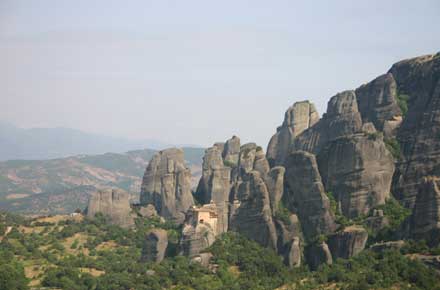
OTHER ACCOUNTS
share your experiences
Add your experiences, suggestions and photos. We would be delighted to receive your writing and ideas (which will be attributed appropriately where published).
Anyone planning an expedition to this place should see further important information about this walk.
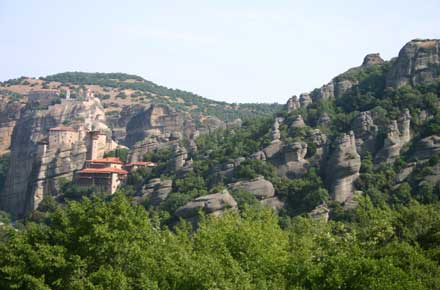
Responsible travel matters, a lot. How you travel will make a real difference - for better or worse. PLEASE consider this when making plans. Read more



